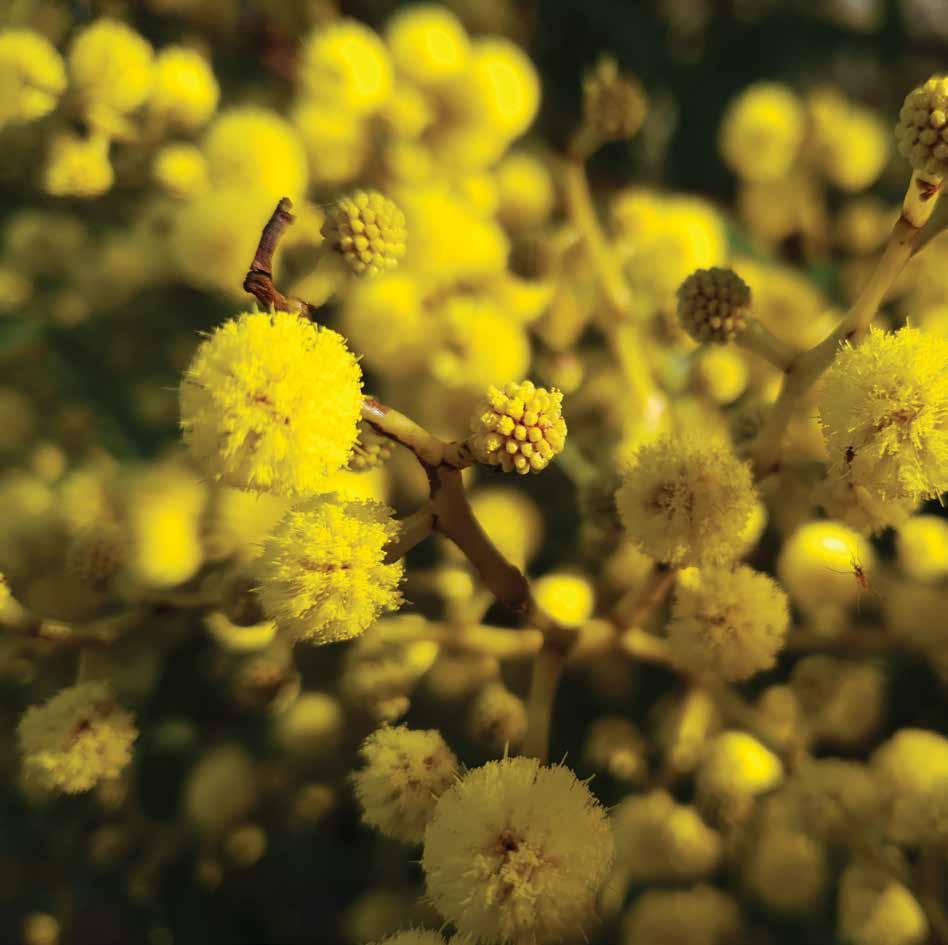
1 minute read
In the spotlight: Glorious Golden Wattle
from ReLeaf Spring 2020
In the spotlight:
GLORIOUS GOLDEN WATTLE
Advertisement
The feathery yellow orbs of the golden wattle (Acacia pycnantha) that so captured Lawrence’s imagination are a common sight in spring, blooming brightly in their native range across the southeast, from the ACT to the
Adelaide Hills.
This wattle grows as a large shrub or a small tree up to eight metres tall and lives only about ten years. It is one of over 1,000 different acacia species found in Australia.
However, golden wattle boasts a certain status among its kin; this iconic
– Kangaroo, D. H. Lawrence.
species is Australia’s national floral emblem, the inspiration for the Aussie green and gold. The cities of Sydney, Melbourne and Adelaide celebrated the first Wattle Day on 1 September 1910, and golden wattle has been on the coat of arms since 1912. On 1 September 1988, golden wattle was declared our national floral emblem.
Like any famous figure, however, the wattle has its private secrets. The long, sickle shaped leaves of a mature golden wattle are a clever deception – they aren’t true leaves at all, but flattened leaf stalks called phyllodes. Likewise, each spherical flower is not one bloom but many, a delicate inflorescence of 40 to 100 small flowers, each with five tiny petals.
These flowers, breathtaking in bloom, often cause acacia species to be blamed for spring allergies. However, research suggests that in fact wattles are rarely the culprit. Rather, spring flowering grasses and other species with much smaller pollens are responsible for most of our sniffles. Bless you!








